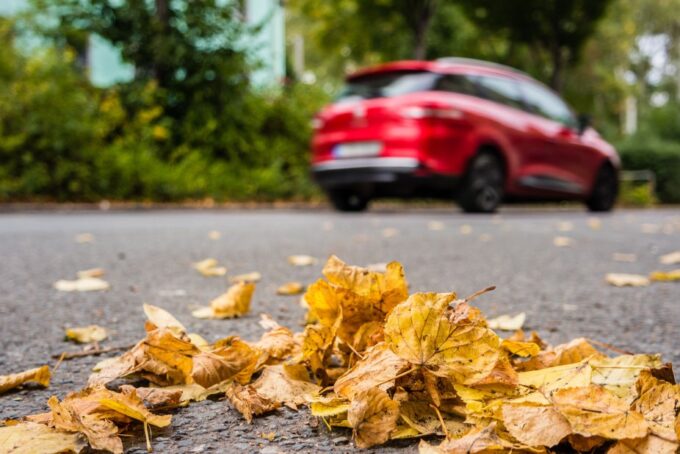On the road in autumn: Switch on dipped headlights
Shorter days, falling temperatures and game on the road: during the cold season, the risk of accidents increases for motorists, motorcyclists and cyclists. The TCS advises drivers to switch on their dipped headlights in bad weather. It also provides further tips.

Autumn often has it all: poor visibility, risk of skidding and wildlife. These factors require road users to adapt their driving style and pay increased attention, as the TCS emphasizes.
Switch on light automation yourself(!)
Those who drive with only daytime running lights despite poor visibility should be aware that most cars are not illuminated at the rear, as the TCS writes. For this reason, drivers should always drive with dipped headlights instead of only daytime running lights in precarious light conditions, it says. Conveniently, the driver does not have to switch on the low beam every time it gets dark or when driving through a tunnel, if the "automatic" function is activated. However, the automatic light system reacts exclusively to differences in brightness. If visibility is impaired by fog, smoke, snow or heavy rain and the brightness remains the same, the automatic light system does not react. Therefore, according to the TCS, in such situations you should switch on the low beam yourself despite the automatic light system. Fog lights and rear fog lights may only be used if visibility is less than 50 m due to fog, driving snow or heavy rain.
E-bikes also with light during the day
Cyclists use their lights best as soon as it is dusk or visibility is poor. E-bikes and e-scooters must use lights during the day as well as at night, the organization stresses. A count conducted by TCS in the fall of 2022 showed that half of scooters and one-third of bicycles were not properly lit or had no lights at all in the morning and evening when visibility was impaired, it said. Another TCS count, conducted in 2023, showed that the situation for electric bicycles and e-scooters could also be improved during the day. Although switching on the front light is obligatory for electric bicycles and e-scooters during the day, only one third of e-scooters drivers comply with this obligation. For electric bicycles, the figure is 76 to 91 percent, depending on the model.
TCS recommends that pedestrians wear light-colored or reflective clothing as soon as they are out and about.
Caution: Wild animals
Autumn is the time of year when the risk of unexpectedly encountering wild animals on or crossing the roadway is at its highest. To reduce the risk of collision and to be able to react in time, it is important to adjust your speed and to be ready to brake at any time, especially after dusk.
If an animal is on the road or in the immediate vicinity, you should switch on your dipped headlights and honk to scare it away. Dangerous evasive maneuvers should be avoided. If, despite these precautions, a collision occurs, the accident should be reported immediately to the police. The police will send the gamekeeper, a hunter or a veterinarian to the scene of the accident. Never approach an injured animal, but wait at a safe distance for the arrival of the experts, as the TCS emphasizes.
More challenges
Due to the lower temperatures in autumn, the risk of skidding is greater and the braking distance is also longer. The reason for this is wet and cold roads covered with leaves or dirt. Water puddles also increase the risk of aquaplaning. In cold temperatures, ice can already be expected to form on bridges. Car drivers should put on winter tires in good time according to the so-called O-rule (October to Easter), as the TCS emphasizes in conclusion.









